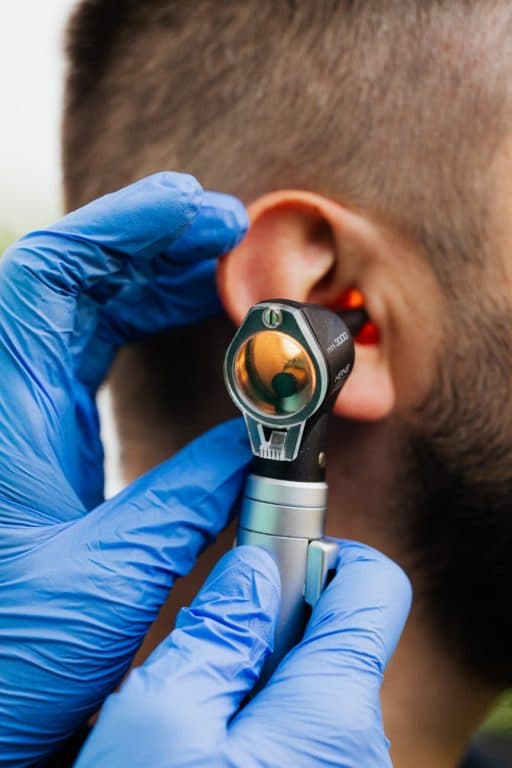Getting To Know Otitis Externa – A Swimming Ear Infection
Ear diseases may develop when the ear is left contaminated after swimming. These infections are known as “swimmer’s ear” or in other words “Otitis Externa”.
The inflammatory infection occurs within the inner ears and causes pain and discomfort to the ears. Any age group can suffer from otitis externa, but it is more commonly seen among kids.
This is a guide to understanding the disease, its symptoms, transmission and preventive measures that can be taken to avoid the ear infection from happening and to treat the swimmer’s ear.
Swimmer’s Ear Vs Ear Infection
Summers is an incredible time of the year for swimming and enjoying water sports. Playing in the swimming pool frequently, for long hours may cause ear pain.
This ear pain is generally perceived as an ear infection. Ensure to know the dissimilarity between a middle ear infection and a swimming ear. If you want to know more about swimming related guidance, follow the link to find out more.

Swimmer’s ears are infections of the external part of the ear canal. It is commonly created through water left in the ear canal that persists after swimming and creates a humid environment for bacteria to grow.
Although this condition can happen to anyone, swimming ears can be most prevalent in young children because their ears are narrow. During summertime as pools are increasingly popular, kids are more prone to getting the infection.
On the other hand, an ear infection is an infection in the eardrum caused by a viral bacteria. It is vital to differentiate between a swimmer’s ear and an infected ear, to treat the ear accordingly.
Symptoms Of Swimmer’s Ear
All sounds are muffled as if you have a bubble in your ear. Your ear gets itchy. You feel an immense amount of pain in your ear. This pain is often associated with an infected ear but the swimmer’s ear is different from an ear infection.
Commonly found in young children, a swimming ear usually shows symptoms from one to two weeks after contamination. When suspected, make swimmers contact with a healthcare practitioner.
Swimmers who have mild cases of swimmer’s ear can treat their ear using antibiotic ear drops.
Transmission Of Swimmer’s Ear
The swimmer’s ear occurs if the water stays in ear canals indefinitely, providing a favorable place for bacteria and viruses to spread. In some aquatic areas, the bacteria can cause swimmer ear infections. On the other hand, the swimmer’s ears cannot spread between people. Here are a few things you can know regarding water safety.

Treatment For Swimmer’s Ear
The use of pain-relieving medications like Ibuprofen and Tylenol can be helpful to reduce ear pain resulting in ear infections. Using cold compression to soothe the affected ear can also reduce the swelling.
The cause should be investigated by a medical specialist. The treatment depends on the diagnosis, whether it’s an ear infection or swimmer’s ear and then it’s treated accordingly.
Ear Canal Infection Treatment
The otoscope can help detect bacterial growth in the ear canal. If the ear has swollen or broken, it means it is preventing further infection from spreading into other areas. This explains why you need to see your doctor in a nearby hospital’s emergency room.
When a physician is determined that bacteria is causing the infection she will prescribe antibiotics. It is not possible to immediately treat the virus, the pain will need to be treated and takes a little while to go away.
Swimmer’s Ear Treatment
Swimmers’ ears may often be treated with online consultation with a professional. This helps to prevent symptoms that appear at home, while in the office or at the weekends, as all of the online clinics are accessible 24 hours a day.

Your physician may prescribe antiseptic ear drops as a way of treating your swimmer’s ear.
How Do You Get Freed From An Ear Infection Caused By Swimming?
A few ways of removing the swimming ear are to:

- Pull your head up and drain the ear.
- Keep ears damp with a towel to keep them drier and hydrated.
- Dry your ears with a hair dryer.
- Use ear drops designed for swimmer’s ears.
- Ease ear aches with a heating pad or painkiller medicine.
Frequently Asked Questions
How Long After Swimming Can You Get An Ear Infection?
A swimmer’s ear is referred to as having a growth of bacteria in the outer ear canal. The ear infection usually develops within two weeks after swimming, and the symptoms include itchiness within the ear.
Is It Safe To Go For A Swim With An Ear Infection?
It can be determined from the condition of the ears. Those people who have eardrum ruptures can swim when the pain hasn’t been caused by the injury. Going underwater can cause painful ear infections, but playing with water (without falling) shouldn’t cause any trouble.
What Is The Time Duration To Heal An Ear Infection With Antibiotics?
Usually minor ear infections clear within 1-3 days. Typically antibiotics can take 10 days to start. The fluids can linger on the ears for a couple of weeks after it’s cleared.
Can You Get A Swimmer’s Ear From A Lake?
Water types also matter. Swimmers’ ear infection (Otitis externa) occurs when water escaping into the ear canal becomes trapped in water. It usually happens because bacteria in the sea are present. swimming in water in lakes and pools can lead to bacteria, increasing the risk of ear infections.
What Do You Put In Your Ears After Swimming In A Lake?
It can be helpful to have preventative ear drops before swimming or ear drops for ear infections.
A mixture of 1 % white vinegar and 1 % rubbing alcohol may aid in dryness and prevent the growth of bacteria and fungi causing otitis externa.
The Final Word
People turn to swimming pools during the hot summer months, especially children. This causes the transmission of bacteria from pool water. Swimmer’s ear usually occurs when excess moisture enters your ear giving bacteria a moist environment to grow.
The common symptoms of a swimmer’s ear are muffled hearing, itchiness in-ear and pain. if you experience familiar symptoms there is a chance you have a swimming ear infection.
You can treat mild swimmer’s ear with off-the-counter ear drops, in case of excess pain, you must visit a healthcare provider to rule out middle ear infections. Swimmer’s ear can be prevented by using ear plugs and draining and drying your ear with a hair dryer after swimming.

